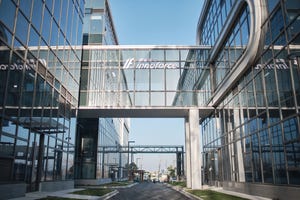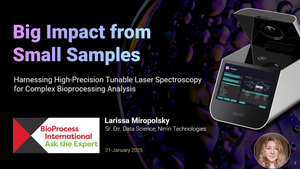
Drugmakers using continuous manufacturing (CM) should ensure design measures are in place to demonstrate the acceptability of all cell culture material used to generate biologic drug substances.
Endorsed by the International Council for Harmonization (ICH) Assembly in November 2022, the final guidance issued by the US Food and Drug Administration (FDA) entitled Continuous Manufacturing of Drug Substances and Drug Products aims to help industry develop, implement, and operate lifecycle management processes for continuous manufacturing (CM).
Much of the guidance (reproduced below) focuses on small molecule chemical entities. The first FDA approval using CM was in 2015 for Vertex’s cystic fibrosis drug Orkambi (lumacaftor/ivacaftor), while the following year saw Janssen’s Prezista (darunavir) HIV drug become the first drug to be switched from batch to CM.

Image: DepositPhotos/JonnyDrake
But the document also offers large molecule makers guidance as to how CM can be adopted for recombinant protein production and is illustrated by an example of a unit operation based on perfusion cell culture with continuous downstream chromatography. The example is composed of a bioreactor compatible with a perfusion culture system, continuous capture chromatography, virus inactivation, and polishing purification chromatography columns, virus filtration, and buffer exchange and concentration through tangential flow filtration.
According to the FDA a CM control strategy should be developed “to include the type and frequency of adventitious agent [e.g. bacteria, viruses, fungi, mycoplasma] testing undertaken to demonstrate that the process remains free of contamination during cell culture and other downstream steps.
“An aspect unique to CM is extended cell culture duration and continuous processing of harvested cell culture material to obtain drug substances. This means that design measures should be in place to demonstrate the acceptability of all cell culture material used to generate a given drug substance batch.”
The Agency also gives guidance on preventing contamination through equipment design and system integration.
“Single-use connections (e.g., tube welds, connectors) and components may experience long durations or high change-out frequencies and should be evaluated as potential contamination risks. Filtration steps in CM may be subject to longer filtration periods and potentially increased throughput per unit area or a greater number of filter changes than those under batch manufacturing.
“Given these factors, a control strategy and a clearly defined scheme should be put in place to allow for filter changes and pre- and post-use integrity testing, as appropriate, without interrupting the process.”
Meanwhile, process monitoring and real-time release testing is encouraged as part of the control strategy.
“An in-process test that is demonstrated to be representative of a release test performed on the output material may be used as a surrogate for a traditional release testing method. Conventional offline testing for product release is necessary for quality attributes for which analytical technologies are not available for online or in-line measurements (e.g., potency). Likewise, conventional tests for monitoring and control (e.g., microbiological analytical methods and other tests that require long processing times) might also be needed.”
About the Author
You May Also Like

schedl_b_and_w.jpg?width=100&auto=webp&quality=80&disable=upscale)
schedl_b_and_w.jpg?width=400&auto=webp&quality=80&disable=upscale)





